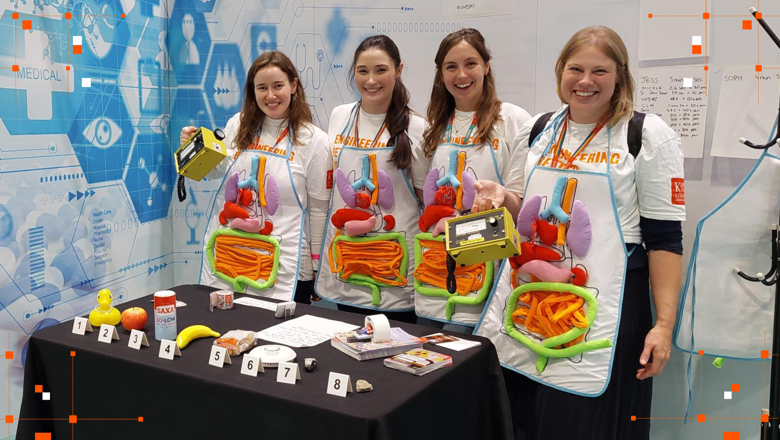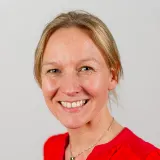As things progressed and I got older and had kids of my own, I started to see that there is an opportunity to engage with children or young adults beyond the inspiring kind. We can learn from each other and see each other, not necessarily as equals in science, but definitely as equals in terms of experience. And so, the engagement becomes more of a discussion and recognition that each other’s opinions matter.
Dr Samantha Terry, Reader in Radiobiology, King’s College London
27 March 2024
In Conversation with Dr Samantha Terry
Dr Samantha Terry talks to us about the impact public engagement can have on both research and inspiring the next generation of scientists.

Samantha is a Reader (Associate Professor) in radiation biology at the School of Biomedical Engineering & Imaging Sciences. She studied an undergraduate degree in Cell Biology and Pathology, followed by a PhD in Radiobiology, three postdoctoral research positions (at Oxford, in the Netherlands, and at KCL) and finally secured a lectureship position within the School in 2015.
She has recently released a white paper, in collaboration with colleagues from the Netherlands, calling for funding to improve cancer treatments.
The paper outlines that by harnessing the precision of radioactive elements, radioactive cancer-targeted drugs enable personalised, potent, minimally invasive treatments that transcend the limitations of conventional cancer therapies.
“Working on better understanding what different forms of radioactivity do to cancer cells as well as our healthy tissues can turn treatments that currently aim to prolong life by a bit or enhance a patient’s quality of life to a potentially curative scenario where the person no longer has cancer. This is what we are passionate to help achieve.”
Beyond her research, Samantha has honed her skills as a science communicator and does extensive work around outreach and public engagement.
“Research has a long-term impact on patients’ therapeutic options and quality of life, but it is a very slow process that can be quite infuriating, and I wanted to make an impact faster. When I joined King's in 2014, I happened to join the School at the same time as a new Public Engagement Manager, Alice Taylor-Gee. She introduced me to the idea of outreach and engagement to support my research.”
Samantha says she was nervous at first but exploring public engagement opportunities has allowed her to grow her science communication skills and strengthen the quality of her research. By working directly with patients, she is able to understand what is important to them, giving her the confidence to pursue specific research areas that will have the most impact.
Samantha’s outreach and public engagement is specifically centered around working with children and young people. “At first, I was most excited about working with children because it has quite an immediate impact on their perception of science and whether it's an area they want to pursue or not. I hope to spark some kind of enthusiasm for the topic,” she says.
While outreach and public engagement is an important tool to bring science to all children, there is still a lot of unconscious bias about the type of person who can work in STEMM and a significant need for more female representation.
“In 2016 I did some work with Soapbox Science. I stood on a box in touristy Southbank in London, talking about my radiation research and the different responses our cells can have to this. I was heavily pregnant with my white coat barely buttoning up and a massive “Baby on Board” badge.
“Now whenever I do public engagement, I like to include the message that I have small children as well as being a scientist and an academic. What has ended up being quite important to me is showing up and showcasing that I am a woman in STEMM and helping to dispel those biases.
“I'm very keen to continue supporting people of all genders and help give them the easiest pathway into an academic career.”


